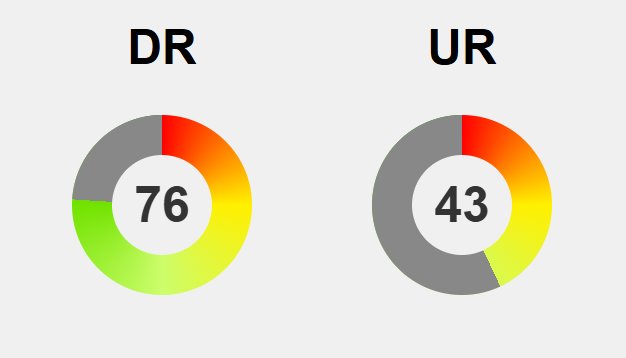Leonardo da Vinci is celebrated as a quintessential Renaissance artist, but his true genius lay in his boundless curiosity and interdisciplinary mastery. His notebooks reveal a mind that seamlessly blended art, science, engineering, and anatomy—pushing the boundaries of what was considered possible in his time. From anatomical sketches to early concepts of flight, Leonardo’s relentless pursuit of understanding the natural world continues to inspire modern innovation. Could his groundbreaking ideas hold the key to future breakthroughs in technology and science? By questioning assumptions, visualizing ideas through sketches, and exploring the interconnectedness of disciplines, Leonardo exemplified a holistic approach to discovery that remains profoundly relevant today. His legacy challenges us to look beyond conventional limits, to foster curiosity-driven exploration, and to harness the power of interdisciplinary thinking—possibly unlocking secrets that could shape our future just as they did his.
Unveiling Leonardo da Vinci: The Renaissance Polymath’s Multifaceted Genius
Leonardo da Vinci is often remembered as the quintessential Renaissance artist, but his talents reached far beyond brushstrokes and portraits. He was a true polymath—an inventor, scientist, engineer, anatomist, and thinker whose curiosity knew no bounds. His notebooks are filled with sketches and ideas that reveal a mind constantly seeking connections between art and science, blending creativity with inquiry in ways that still inspire today. From detailed anatomical drawings to early concepts of flight, Leonardo’s work exemplifies a relentless drive to understand how the world works.
Living during the Renaissance—a time of renewed interest in humanism and classical knowledge—Leonardo thrived in an environment that celebrated discovery and experimentation. This era encouraged thinkers to challenge traditional ideas and explore new ways of understanding nature. Leonardo’s ability to integrate artistic mastery with scientific investigation set him apart from his contemporaries. His meticulous observations and inventive sketches were more than artistic exercises—they were active explorations into the mechanics of the natural world, from anatomy to aerodynamics.
What makes Leonardo’s genius especially compelling is how seamlessly his artistry and science intertwined. His mastery of techniques like sfumato and chiaroscuro wasn’t just about creating realistic images; it reflected an understanding of light, shadow, and human physiology. His anatomical studies, based on dissections he performed himself, advanced medical knowledge long before anatomy became a formal science. This fusion of art and science not only enhanced his paintings but also fueled innovations across multiple disciplines, demonstrating that breaking down boundaries can lead to groundbreaking insights.
Leonardo’s notebooks contain ideas far ahead of his time—sketches of flying machines, hydraulic devices, and mechanical systems that remain unbuilt, yet foundational. His inventive spirit was driven by boundless curiosity and a desire to unlock nature’s secrets. Many of his concepts, though not realized during his lifetime, laid the groundwork for future technological progress. His relentless questioning and ability to see connections across fields continue to inspire modern innovators to think beyond conventional limits.
In essence, Leonardo da Vinci’s genius was rooted in a curious, interdisciplinary mindset. His ability to blend art with science, to observe deeply, and to challenge assumptions created a blueprint for innovation that still resonates today. His work reminds us that curiosity and the willingness to explore uncharted territory can unlock discoveries capable of transforming human progress. Leonardo’s legacy is a testament to the power of curiosity-driven thinking—a call for us to look beyond the obvious and embrace the endless possibilities of discovery.
The Art and Science of Leonardo: Foundations of Innovation and Mastery
Leonardo da Vinci’s artistic achievements are renowned, but their true strength lies in how closely they are intertwined with his scientific curiosity. His mastery of techniques like sfumato and chiaroscuro wasn’t just about creating realistic images; they reflected a profound understanding of light, shadow, and human perception. These methods allowed him to craft portraits and scenes that seem to breathe with life, capturing subtle emotional nuances that set new standards in art. Behind this realism was a meticulous study of anatomy, which Leonardo pursued through detailed sketches based on dissections he performed himself. These anatomical drawings weren’t merely artistic exercises—they advanced medical understanding long before anatomy became a formal science.
His notebooks reveal a mind that saw no strict boundary between art and science. Filled with sketches of machines, anatomical diagrams, and scientific observations, they served as visual blueprints for understanding how the world works. Leonardo’s studies in perspective, for example, weren’t solely about creating depth in paintings—they demonstrated a deep grasp of optics and spatial relationships rooted in scientific principles. His anatomical studies enriched the lifelike quality of his figures in masterpieces like the Mona Lisa and The Last Supper, illustrating how keen observation and experimentation fueled both his art and his scientific insights. This seamless integration created a holistic view of the world, where seeing and understanding were inseparable.
What stands out most is how Leonardo’s artistic mastery and scientific inquiry continuously fed into each other. His anatomical sketches enhanced the realism of his portraits, while his eye for detail in observation helped him notice physiological nuances others overlooked. This crossing of disciplines pushed the boundaries of what was artistically and scientifically possible, inspiring innovations that extended beyond the canvas into mechanisms, engineering, and anatomy. Many of his ideas for inventions—such as flying machines and hydraulic devices—originated from this interdisciplinary curiosity. Even as some remained sketches, they laid the groundwork for future technological advances, demonstrating the power of blending art with science.
Leonardo’s inventive mind didn’t rest on existing knowledge; he constantly challenged accepted beliefs and explored new ideas. His ability to see connections across fields fueled breakthroughs that were centuries ahead of his time. Whether designing early concepts of flight or imagining complex mechanical systems, his work exemplifies how crossing boundaries between disciplines can lead to revolutionary thinking. His relentless curiosity and willingness to experiment with different methods allowed him to uncover insights that continue to inspire scientists and artists today.
In essence, Leonardo da Vinci’s legacy underscores the importance of a holistic approach to discovery. His seamless fusion of artistic mastery with scientific inquiry created a foundation still relevant for modern innovation. By observing nature closely, questioning assumptions, and visualizing ideas early through sketches, he demonstrated that progress often begins at the intersection of disciplines. His work encourages us to see art and science not as separate realms but as complementary forces—driving human understanding forward through curiosity, experimentation, and a fearless pursuit of knowledge.
Secrets of Leonardo’s Method: Inspiring Future Breakthroughs Through Observation and Interdisciplinary Thinking
Leonardo da Vinci’s approach to problem-solving offers timeless lessons that remain highly relevant for today’s scientific and technological progress. His methods were rooted in keen observation, relentless curiosity, and a fearless questioning of established ideas. Instead of accepting surface explanations, Leonardo dug deeper, seeking to understand how the natural world truly works. Modern researchers can adopt this mindset by paying close attention to phenomena around them and challenging assumptions that often go unquestioned, opening the door to breakthroughs beyond conventional thinking.
A key element of Leonardo’s genius was his interdisciplinary outlook. He refused to see art, science, and engineering as separate silos. Instead, he viewed them as interconnected tools for understanding and shaping the world. This blending of disciplines allowed him to generate insights others might overlook. Today’s innovators can follow his lead by breaking down disciplinary barriers and exploring the connections between fields such as biology, physics, and technology. Such cross-pollination sparks fresh ideas and can lead to innovations that would never emerge within a single domain.
Sketching was another vital part of Leonardo’s process. He visualized ideas early through rapid sketches, which clarified complex concepts and revealed hidden opportunities or flaws. Modern rapid prototyping and digital modeling serve similar purposes, enabling teams to experiment and refine designs quickly. Embracing visual experimentation fosters iterative development, making it easier to learn from failures and improve solutions before significant resources are committed. Leonardo’s habit of sketching and refining underscores the importance of hands-on exploration in transforming abstract ideas into practical innovations.
Challenging assumptions was central to Leonardo’s work. He constantly questioned accepted beliefs and sought evidence outside traditional sources, pushing into uncharted territory. Whether contemplating early flight or designing mechanical devices, he dared to explore unconventional hypotheses. Today’s researchers can adopt this mindset by remaining open to bold ideas and embracing failure as part of discovery. This openness often leads to revolutionary breakthroughs rather than incremental progress, fueling advancements that redefine what’s possible.
Finally, Leonardo’s meticulous engagement with nature provided invaluable insights. He studied the flight of birds, the flow of water, and human anatomy with intense focus, extracting principles that informed his inventions and artworks. Grounding innovation in detailed observation allows today’s scientists to develop more effective, sustainable solutions. Whether creating medical devices, renewable energy systems, or advanced materials, paying close attention to natural processes can reveal patterns and mechanisms that accelerate progress. His example reminds us that curiosity, combined with detailed study, is essential to unlocking new frontiers of knowledge.
By embracing Leonardo’s holistic and inquisitive approach, modern innovators can continue to push the boundaries of what is possible. For those interested in exploring how interdisciplinary thinking can accelerate innovation, learning more about interdisciplinary approaches to problem-solving can provide valuable insights and practical strategies.
Harnessing Leonardo’s Principles Today: Strategies for Modern Innovation and Discovery
Modern scientists and innovators can draw powerful lessons from Leonardo da Vinci’s problem-solving approach, which remains strikingly relevant today. His relentless curiosity and keen observation encouraged him to look beyond surface explanations, pushing for a deeper understanding of natural phenomena. Rather than accepting conventional wisdom, Leonardo questioned assumptions and explored underlying principles, inspiring breakthroughs that often defied the norms of his time.
Interdisciplinarity was at the core of Leonardo’s method. He seamlessly blended art, science, and engineering, recognizing that innovation often happens at their intersection. Today, breaking down disciplinary barriers can spark fresh insights and lead to solutions that wouldn’t emerge within a single field. Embracing this cross-pollination encourages creative thinking and keeps ideas fluid, much like Leonardo’s own explorations across multiple domains.
Sketching was another fundamental tool for Leonardo. His visualizations helped clarify complex ideas early on, revealing opportunities and flaws alike. Modern rapid prototyping and digital modeling serve a similar purpose, enabling quick experimentation and iteration. By visualizing ideas early and often, teams can refine concepts more efficiently, reducing costly mistakes and accelerating progress.
Challenging assumptions is essential to breakthrough innovation. Leonardo’s willingness to question accepted beliefs pushed him into uncharted territory, from early concepts of flight to mechanical inventions. Today’s researchers can adopt this mindset by remaining open to unconventional hypotheses, understanding that failure is part of the discovery process. This openness fosters an environment where revolutionary ideas can flourish, rather than settling for incremental advances.
Deep engagement with nature was central to Leonardo’s work. His careful study of birds in flight, water flow, and anatomy provided insights that fueled his inventions and artworks. Modern innovators can mirror this approach by observing natural systems closely, extracting patterns and principles that lead to sustainable, effective solutions. Nature’s efficiency and complexity often hold the keys to solving our most pressing challenges.
Visual experimentation played a significant role in Leonardo’s success. Sketching, modeling, and testing ideas early allowed him to explore possibilities and identify pitfalls before investing heavily. Embracing this iterative process today, through digital simulations and prototypes, can accelerate development and foster resilience against setbacks, turning failures into valuable learning opportunities.
In essence, applying Leonardo da Vinci’s principles today means cultivating curiosity, encouraging cross-disciplinary thinking, and embracing hands-on experimentation. His approach reminds us that innovation thrives where boundaries dissolve and exploration is relentless. By adopting these timeless strategies, modern thinkers can unlock new pathways to discovery, echoing Leonardo’s own quest to understand and shape the world around us.
Legacy of Curiosity: Embracing Leonardo’s Spirit to Shape Future Discoveries
Leonardo da Vinci’s legacy offers a timeless blueprint for future innovation, reminding us that curiosity and interdisciplinary thinking remain at the heart of discovery. His ability to blend art with science and to imagine uncharted inventions continues to inspire breakthroughs today. By studying his approach—relentless questioning, meticulous observation, and a fearless exploration of the unknown—we can unlock new pathways to solve some of humanity’s most pressing challenges. Embracing Leonardo’s spirit encourages us to dissolve the boundaries between fields, creating space for ideas that could redefine what’s possible.
Many of Leonardo’s concepts, from early flying machines to hydraulic innovations, were centuries ahead of their time. Reexamining these ideas with modern technology might reveal solutions to current issues like sustainable transportation, renewable energy, and medical advancements. His inventive spirit shows that some of the greatest breakthroughs are hidden within his sketches and theories, waiting for the right moment and tools to bring them to life. Exploring these forgotten or unfinished ideas could spark the next wave of innovation, continuing Leonardo’s quest to understand and shape the world.
Applying Leonardo’s principles today involves nurturing curiosity as a daily habit. Asking bold questions, challenging assumptions, and observing nature deeply can lead to insights often overlooked in conventional approaches. His interdisciplinary mindset encourages breaking down silos, fostering cross-pollination of ideas that spark unexpected solutions. Visual experimentation—through sketching, prototyping, or modeling—remains vital for refining concepts and uncovering new opportunities. His example shows us that progress begins when we dare to look beyond the obvious and embrace the unknown.
Resilience played a key role in Leonardo’s relentless pursuit of knowledge. He viewed setbacks not as dead ends but as opportunities to learn and improve. This mindset inspires modern innovators to persist through obstacles, understanding that breakthroughs often emerge after multiple attempts. Embracing trial, error, and continuous refinement turns failures into stepping stones toward success. Leonardo’s example reminds us that the journey of discovery is ongoing, fueled by passion and an unyielding desire to deepen our understanding.
By harnessing Leonardo da Vinci’s spirit—his curiosity, interdisciplinary approach, and resilience—we can unlock solutions to some of today’s most complex problems. His genius demonstrates that daring questions and a willingness to venture into uncharted territory are the true drivers of progress. Integrating these timeless strategies into our work and mindset can lead to innovations that push boundaries and inspire a new era of human achievement. Leonardo’s legacy encourages us to see beyond the horizon, exploring boldly with an open mind and a relentless drive to discover.






